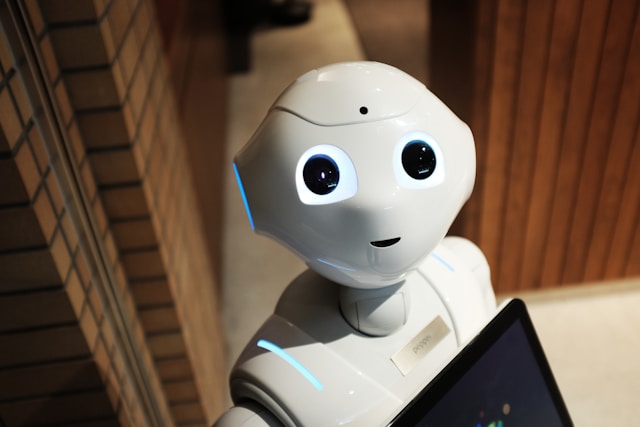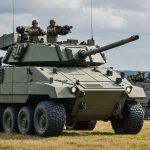The world of industrial manufacturing and production is undergoing a significant transformation thanks to the rise of artificial intelligence (AI). One area in which AI is making a huge difference is the sector of industrial robots. These machines, which once operated in isolation, are now becoming more interconnected and intelligent thanks to AI.
This article aims to explore the role of AI in enhancing the real-time monitoring of industrial robots. We will dive into the benefits AI brings, the challenges that are yet to be overcome, and the future prospects of this exciting field.
Additional reading : How to use AI for predictive analytics in retail inventory management?
Enhanced Predictive Maintenance
Industrial robots are costly investments and any downtime due to malfunctions or maintenance can lead to significant financial losses. The traditional method of preventive maintenance based on fixed schedules often results in unnecessary downtime and added costs. AI is changing this situation by enabling predictive maintenance, where potential problems are detected and addressed before they cause any downtime.
AI-powered predictive maintenance uses machine learning algorithms to analyze the vast amounts of data generated by industrial robots. These algorithms can identify patterns in the data that human operators might miss, such as subtle changes in performance or behavior that could indicate an impending failure. By identifying these signs early, maintenance can be scheduled proactively, minimizing downtime and reducing costs.
Also read : What are the challenges and solutions for deploying AI in remote and rural healthcare settings?
In addition, AI offers the ability to learn from past data and adjust its predictive models over time. This means that the system becomes more accurate and reliable as it accumulates more data, leading to further improvements in maintenance efficiency and cost savings.
Optimized Performance and Efficiency
AI not only helps in maintaining industrial robots but also plays a crucial role in optimizing their performance and efficiency. The generation of large amounts of data is not limited to issues of maintenance and repair. The data generated from daily operations can be used to improve the overall efficiency of the robots.
AI can analyze this data to identify patterns and trends in the robots’ operation. From these patterns, the AI can recommend adjustments to the robots’ programming or physical setup to optimize their performance. This could mean adjusting speed, movement patterns, or even the layout of the production line.
Furthermore, AI can learn from previous operations and continually adapt its recommendations based on new data. This means that the system is constantly evolving and improving, leading to continuous improvements in efficiency and productivity.
Real-time Decision Making and Adaptability
One of the most valuable benefits of using AI for monitoring industrial robots is the ability to make real-time decisions. Traditional monitoring systems are typically reactive, responding to problems or changes in performance after they occur. In contrast, AI-powered systems are proactive, using real-time data to anticipate and respond to potential issues before they impact production.
For example, if a robot’s performance starts to decline, AI can immediately analyze the situation and determine the best course of action. This might involve adjusting the robot’s settings, re-routing tasks to other robots, or scheduling maintenance. All of this can happen in real time, minimizing the impact on production.
AI’s ability to adapt to changing conditions is another significant advantage. Industrial robots operate in complex and dynamic environments, and conditions can change rapidly. AI can analyze real-time data to understand these changes and adapt the robots’ operation accordingly.
Enabling Collaborative Robots
The advent of AI is also enabling the development and deployment of collaborative robots, or ‘cobots’. These are robots designed to work alongside human workers, assisting them in tasks that require precision, strength, flexibility, or endurance.
AI is critical in making these cobots safe and effective. AI algorithms can help cobots understand their human colleagues’ movements and intentions, allowing them to react appropriately. This includes avoiding collisions, handing over tools at the right time, or adjusting their speed and position to match the human worker’s pace.
Real-time monitoring is crucial in this context, as it allows the cobots to respond instantly to changes in the environment or the human worker’s actions. This can prevent accidents and ensure that the cobot is always assisting in the most effective and efficient way possible.
Overcoming the Challenges of AI Implementation
Despite the many benefits AI brings to the monitoring of industrial robots, there are also challenges to overcome. These include the complexity and cost of setting up AI systems, the need for high-quality data, and the risk of cyber-attacks.
Firstly, implementing AI requires a significant investment in hardware, software, and expertise. This can be a barrier for smaller companies or those with tight budgets. However, the long-term cost savings and efficiency gains can often justify this initial investment.
Secondly, AI systems rely on vast amounts of high-quality data. This requires robust data collection and management systems, which can be complex to set up and maintain. Furthermore, there can be privacy and security concerns related to the handling of this data.
Finally, as with any connected system, AI-powered monitoring systems are potentially vulnerable to cyber-attacks. Companies must therefore invest in robust cybersecurity measures to ensure their systems and data are protected.
Despite these challenges, the potential benefits of AI for the real-time monitoring of industrial robots are significant and far-reaching. As AI technology continues to evolve and mature, these benefits are likely to grow even further, revolutionizing the world of industrial robotics.
Boosting Quality Control with AI
Besides predictive maintenance and performance optimization, AI can significantly enhance the quality control aspect of industrial robotics. Often, factories rely on human inspection for quality control. However, this method is prone to human error and can be time-consuming. AI can step in to provide a faster and more accurate solution.
AI can analyze real-time data from the robots’ operation and pinpoint anomalies that could indicate a quality issue. For example, a subtle change in a robot’s movement or the speed at which it operates could result in a product defect. Using machine learning algorithms, AI can detect such anomalies and alert human operators, ensuring that any potential issues are identified and resolved quickly.
Moreover, AI can use the historical data from the robots’ operation to improve quality control over time. Machine learning algorithms can ‘learn’ from past defects and their corresponding anomalies, refining their detection skills over time. This leads to continuous improvement in quality control, reducing the likelihood of product defects and the associated costs.
Importantly, AI can also help in traceability, a critical aspect of quality control. It can track and record every action taken by the robots, providing a clear and detailed audit trail. This can be invaluable in situations where a defect is discovered at a later stage in the production chain, as it allows for rapid identification of the point of failure.
The Future of AI and Industrial Robotics
The integration of AI into the field of industrial robotics heralds a new era of increased efficiency, productivity, and quality. The ability of AI to monitor robots in real-time, predict potential issues, optimize performance, and bolster quality control is transforming the way industries operate.
In the future, we can expect AI’s role in industrial robotics to expand even further. As AI technology continues to evolve and mature, new applications will likely emerge. We could see AI being used to fully automate the design and programming of industrial robots, reducing the time and cost involved in these processes.
Moreover, the rise of AI could pave the way for more sophisticated collaborative robots. As AI becomes better at understanding and predicting human actions, cobots will become more intuitive and responsive. This could lead to a more harmonious integration of humans and robots in the workplace, increasing productivity and enhancing worker safety.
While challenges remain in terms of implementation, data management, and cybersecurity, the potential benefits of AI in industrial robotics are vast. As we continue to navigate the fourth industrial revolution, it is clear that AI will play a pivotal role, driving innovation and growth in this sector.
In conclusion, AI is set to revolutionize the world of industrial robotics. Its ability to enhance real-time monitoring will lead to significant improvements in efficiency, productivity, and quality, while also paving the way for more advanced collaborative robots. Despite the challenges, the future of AI and industrial robotics looks bright, promising a new era of technological advancement and industrial growth.











